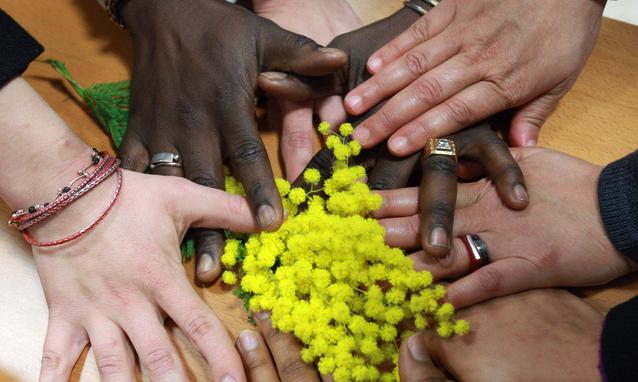From a symbol of women's day to the announcement of the arrival of spring
The cheerful mimosa, with its almost cheeky yellow, delicate but with an intense, generous, apparently fragile aroma. Yet so adaptable and resilient, capable of braving the toughest terrains. And also the time.
Mimosa: plant of the Woman

THE8 March became the Women's Day to remember theMarch 8, 1908 when 129 New York factory workers died in a fire as they protested the unworthy working conditions they were subjected to.
The mimosa remains the undisputed symbol of Women's Day since March 8, 1946 when during an assembly of theUnion of Italian Women of Rome was chosen by a majority to represent the struggles for equality, defeating carnations and anemones, the other two flowers initially proposed. The former were discarded because they were already linked to the May Day Festival. Anemones because they are too expensive.
It took a rather cheap flower to be able to collect and distribute with both hands without having to spend too much money in that post-war Italy that with great effort, but with great enthusiasm and enthusiasm, tried to re-emerge from the rubble. It was then thought of those large trees that already at the beginning of March gave an abundant yellow bloom. They, from Lazio to the South, grew spontaneously in the countryside and along the coasts. In addition, those flowers were within everyone's reach. They could have been harvested directly from wild plants.
In reality then it did not go quite like this. Mimosas, where they grow spontaneously, are often in bloom well before 8 March. Over time, a large market would open up for the occasion. Today they are exclusively grown in greenhouses.
Mimosa: symbol of feminist struggles
Since 1946, Udi has been committed to distributing mimosa on the streets, in schools, in shops, in workplaces. The first step was done. The tradition was consolidated in the following years. In the sixties and seventies, the mimosa became a real symbol of feminist struggles. And even today, when Women's Day has been emptied of all political significance and the struggles for rights mostly belong to the past, the fragrant yellow bunches remain the emblem of this day.
The common mimosa is not the true mimosa. What does it mean?

It's easy to say mimosa. What is commonly called this and that we have all received as a gift at least once, is actually an acacia. Precisely theacacia dealbata, evergreen plant introduced in Europe from Tasmania at the end of the nineteenth century.
The real mimosa has pink flowers and a completely different aspect. But the misunderstanding is now well known and now accepted. The "false mimosa", or acacia, is one of the earliest plants to bloom and announce the arrival of spring. In Italy it grows luxuriantly in the Center South and has also adapted very well to the climate of the Ligurian Riviera and the lakes. In other areas it is better to cultivate it in large pots, so as to be able to take it to the shelter during the cold season, because it does not stand up to low temperatures.
If in the places of origin it can reach up to 20 meters in height, in Italy it almost never exceeds 5 meters. The plant grows fairly quickly, but has a short average life span. Generally it does not exceed 50 years of age.
Depending on the climatic zone, the flowers bloom from December to March, abundant and fragrant.





